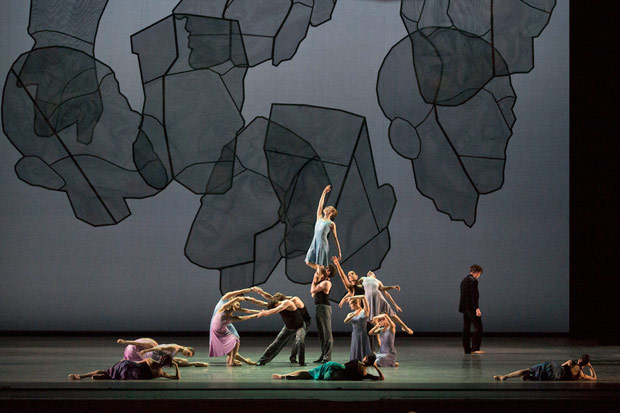
American Ballet Theatre
Shostakovich Trilogy – Symphony #9, Chamber Symphony, Piano Concerto #1
★★★✰✰
New York, Metropolitan Opera House
20 May 2016
www.abt.org
Russophilia
It’s been three years since American Ballet Theatre last performed Alexei Ratmansky’s Shostakovich Trilogy; in that time he has made numerous ballets for companies around the world, including his latest, Serenade After Plato’s Symposium, for American Ballet Theatre. But the Trilogy remains one of his most personal statements, suffused with references to Russia, war, poster art, the paranoia of Soviet life, and events in the life of Shostakovich. It’s a rich work, containing too much to take in at a single sitting. It reveals some of its secrets, but not all.
Each section is a complete ballet, set to a different work by Shostakovich: the jaunty and military Ninth Symphony, the somber Chamber Symphony (a symphonic version of his Eighth Quartet), and the playful and brilliant Concerto for Piano, Trumpet and Strings. Together, they form a complex, layered, and sometimes contradictory portrait. As a note the program says, “the three ballets reflect he composer’s experience living during a period of artistic censure, and, at times, persecution.”
The first ballet seems to point at the militaristic, conformist aspect of Soviet life. The backdrop, by George Tsypin, shows happy, athletic families waving red flags. The choreography, at least at first, is jaunty and playful. A girl mimes a drum roll; a man leaps into the arms of his comrades. At the center of the ballet, though, is a couple who doesn’t fit in. “They’re outsiders… protective of each other, not part of the momentum of life,” Ratmansky once said of these two. They peer into the wings suspiciously and wrap themselves around each other like two snakes. They have a protector, an angelic male figure who floats in, swaying slightly as he drifts across the back of the stage. Still, the ballet ends ominously, with the corps rocking side to side as the orchestra plays a tick-tocking figure, like a clock striking midnight. Who knows what happens after the curtain closes.

The second ballet is the most literal. It is about a man. He suffers torments, both internal and external. He dances with three woman; they seem to represent various things: muses, temptresses, and, finally, great loves. One of them dies and returns as a ghost, flying overhead in the arms of several men. Another consoles him for this loss. In a last effort, he gathers the corps de ballet into a beautiful figure of living sculpture with a woman at its summit, raising her hand to the light. He is an artist; they are his creation. But art doesn’t save him. After he builds his work of art, he skulks off, a broken man.
The final ballet, then, is the vision of the heroic Soviet people. The look here is athletic, even Olympian; the two lead women wear red leotards, like gymnasts. The men are in gray and red. The backdrop consists of red hammers and sickles and bolts, dangling from the sky. Nevertheless, a dark shadow looms here too, like a shark swimming in murky water. Despite the heroics of the cast – and this is the most propulsive of the three ballets – the darkness remains, alluded to in fleeting images of war, prayer and protection. Women are carried across the stage in a slow procession, one leg extended like the barrel of a machine gun. But the image is soon washed away by battalions of sauntering youths, leaps that torpedo through the air, spinning jumps that change direction before landing, lifts in which a dancer is flung and spun like a top only to land, happily, on her partner’s shoulder.
The ballets are a challenge for the whole company; they’re virtuosic and unrelenting and require complete commitment from each and every dancer. Ratmansky forces them to use their whole bodies, intensively. Their backs and sides heave and tilt, their legs bend in deep, juicy pliés, and their arms have a whole language of their own. The texture is varied: now staccato, now gooey and sustained, now clean and classical. Every movement seems to twist in every direction. While executing one lift, the men turn, and we see the women’s bodies in the round; the shape has no front or back, just lines that continue in space. In a ballet this dense, everything has to be very clearly stated to avoid chaos.
Tonight’s performance didn’t attain the level of intensity or clarity I remembered from the first season. Surprisingly, the most vivid of the three ballets was the second (the Chamber Symphony), in part because it was the one that received the best musical performance. (Each ballet was led by a different conductor, Ormsby Wilkins for the first, Charles Barker for the second, and David Lamarche for the third.) The Ninth Symphony and Concerto for Piano and Trumpet may simply be too difficult for ABT’s orchestra to play incisively with limited rehearsal time. Both sounded muddy, un-energetic and lacking in contrast.
But this choreography needs the orchestra’s full support to sustain its energy. The opening section of Symphony #9 lacked the wit and musical detail that made it so invigorating at its premiere in 2012. Even so, Veronika Part and Roberto Bolle (who danced in the original) were dramatic and strong as the central couple. Bolle’s limpid presence combines well with Part’s lush dancing. The effortful, muscular way she uses her back tells you everything you need to know about her character. As their guardian angel, Joseph Gorak (a début) was elegant and pristine, with unerringly beautiful lines. As yet, though, he’s too cautious in the role.
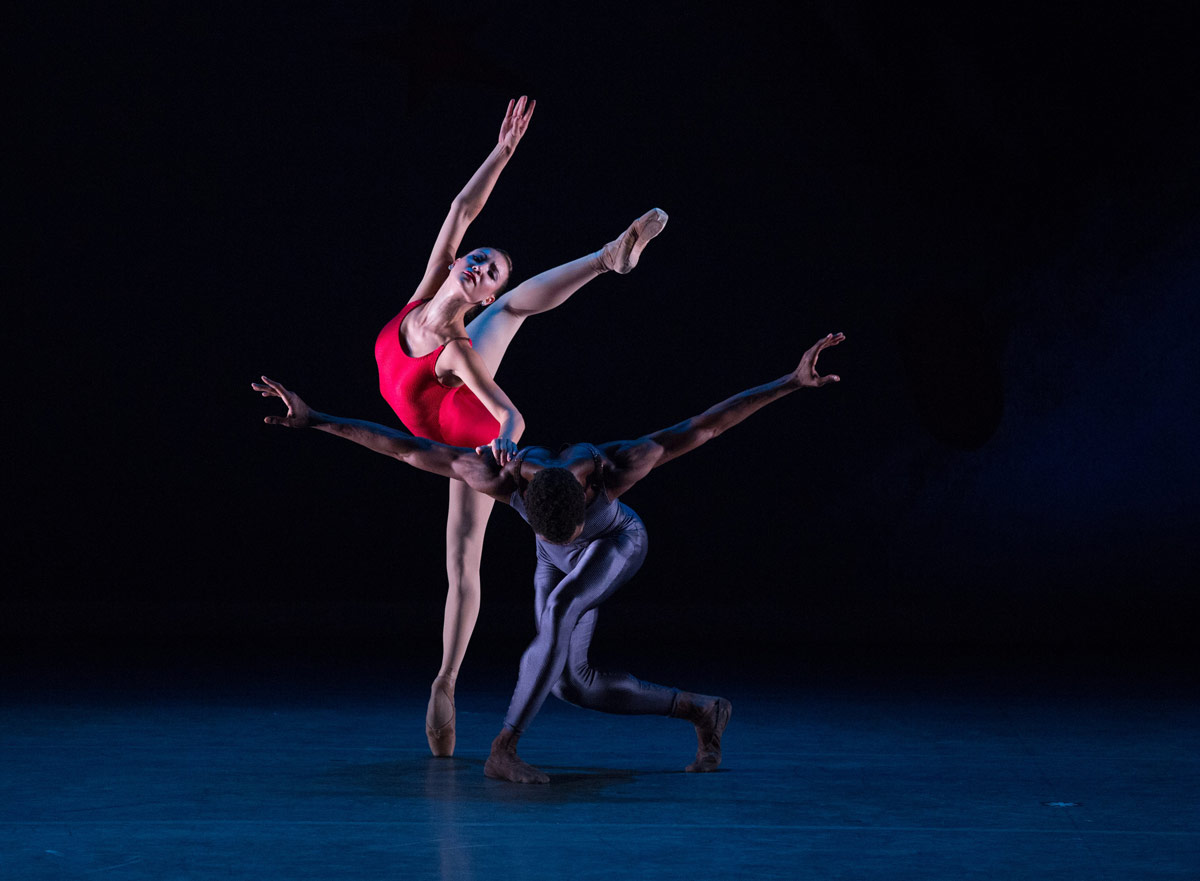
Similarly, Piano Concerto #1 didn’t attain the fever pitch I remember from the original cast (which included Natalia Osipova and Diana Vishneva), despite strong performances from its four leads: Christine Shevchenko, Skylar Brandt, Calvin Royal III and Gabe Stone Shayer. All strong, but not brazen or blazing enough. Here, again, the orchestral playing was part of the problem. Shostakovich’s concerto for trumpet, piano, and strings is a delirious mishmash of musical styles. ABT’s orchestra wasn’t up to it.
Perhaps this is why the Chamber Symphony blazed the most brightly. The symphony, which is based on an agonized quartet, is devastating. (It was written at a time when Shostakovich was terribly depressed.) It contains the composer’s musical signature, a series of four notes derived from the letters of his name (DSCH), as well as quotations from his First Symphony, Cello Concerto, and the opera Lady Macbeth of Mtensk, for which he was severely rebuked by Stalin (too bleak). The central role in the ballet is a kind of stand-in for the composer; it was beautifully and touchingly danced by Jeffrey Cirio, who joined the company as a soloist last year. He will surely be promoted to principal soon. His dancing is pristine and full-bodied – it sings. And though he is a small dancer, he projects, like Herman Cornejo. And he’s deeply musical. His three muses/loves were Cassandra Trenary, Isabella Boylston and Devon Teuscher. Trenary and Teuscher were débuting in their roles; Boylston danced her part (the second lover) for the first time earlier this week. The three characters were finely etched. Each pas de deux had a story. Even more than in other ballets, in Shostakovich Trilogy Ratmansky reveals his deep narrative impulses.
The final tableau, rising up from the stage like wave, had a tremendous impact. It filled the stage, like a promise. The Trilogy needs some polishing up, but it’s worth it.










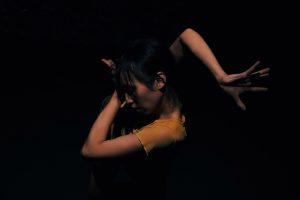
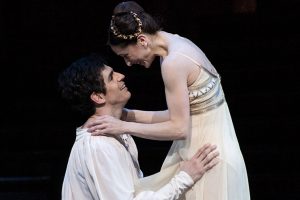
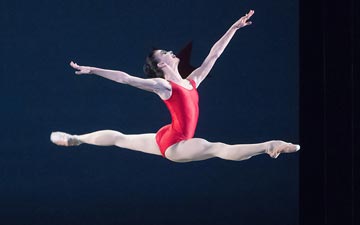
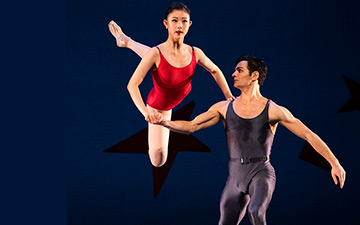
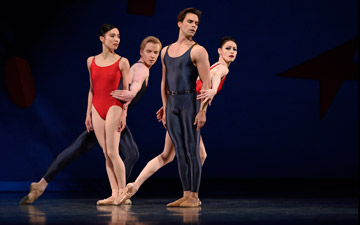

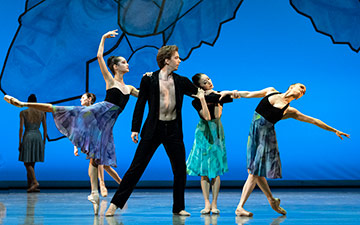
You must be logged in to post a comment.